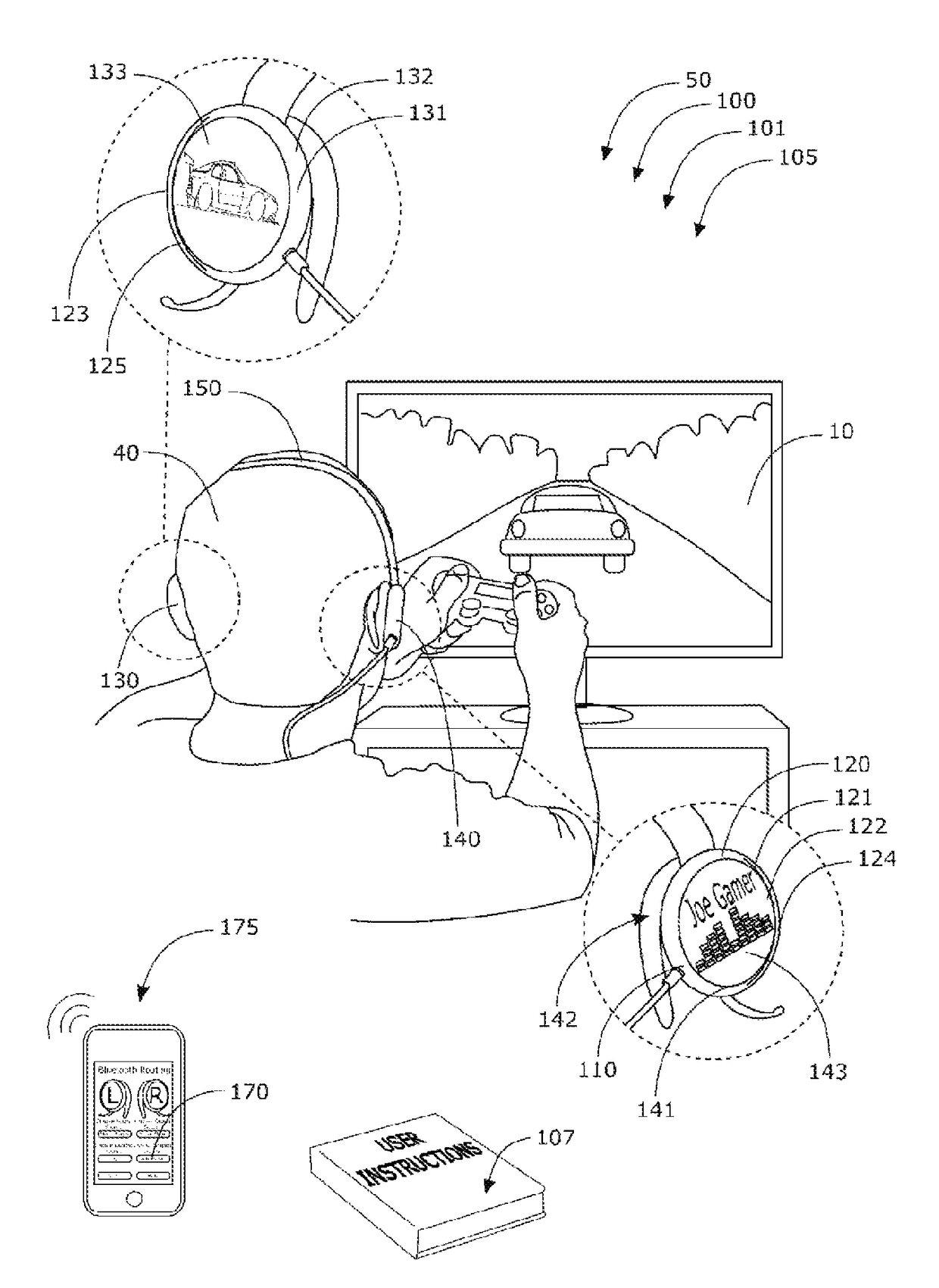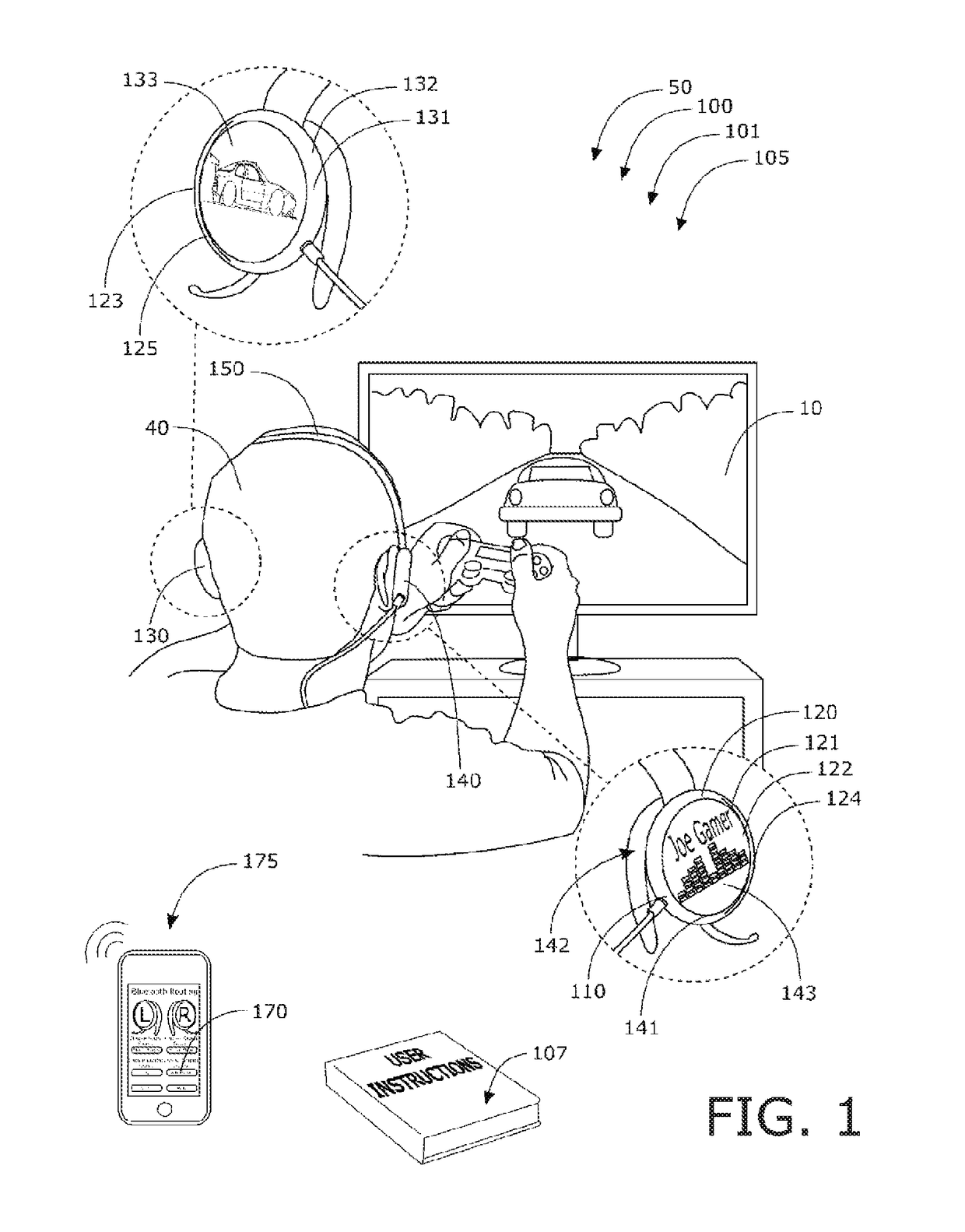Device, system, and method for multimedia communications
- Summary
- Abstract
- Description
- Claims
- Application Information
AI Technical Summary
Benefits of technology
Problems solved by technology
Method used
Image
Examples
Embodiment Construction
[0020]As discussed above, embodiments of the present disclosure relate to a telecommunications platform and more particularly to a device, system, and method for multimedia communications as used to improve wireless communications devices by providing a digital display, independent operations, and enhanced user controls.
[0021]Generally, aspects of this disclosure are directed toward a short range radio protocol sound device (e.g., Bluetooth). The device may be a combination of a listening device with the inclusion of a digital display that may include software controls to enhance the listening possibilities. In one embodiment, it is primarily a device that is put over the ear but can be removed to watch the display if desired. It may be used to listen to music normally as a stereo or one may possibly enable each earpiece to have separate audio sources and graphic sources.
[0022]The device may feature a microphone on each earpiece to enable more than one person to join in the conversa...
PUM
 Login to View More
Login to View More Abstract
Description
Claims
Application Information
 Login to View More
Login to View More - R&D
- Intellectual Property
- Life Sciences
- Materials
- Tech Scout
- Unparalleled Data Quality
- Higher Quality Content
- 60% Fewer Hallucinations
Browse by: Latest US Patents, China's latest patents, Technical Efficacy Thesaurus, Application Domain, Technology Topic, Popular Technical Reports.
© 2025 PatSnap. All rights reserved.Legal|Privacy policy|Modern Slavery Act Transparency Statement|Sitemap|About US| Contact US: help@patsnap.com



